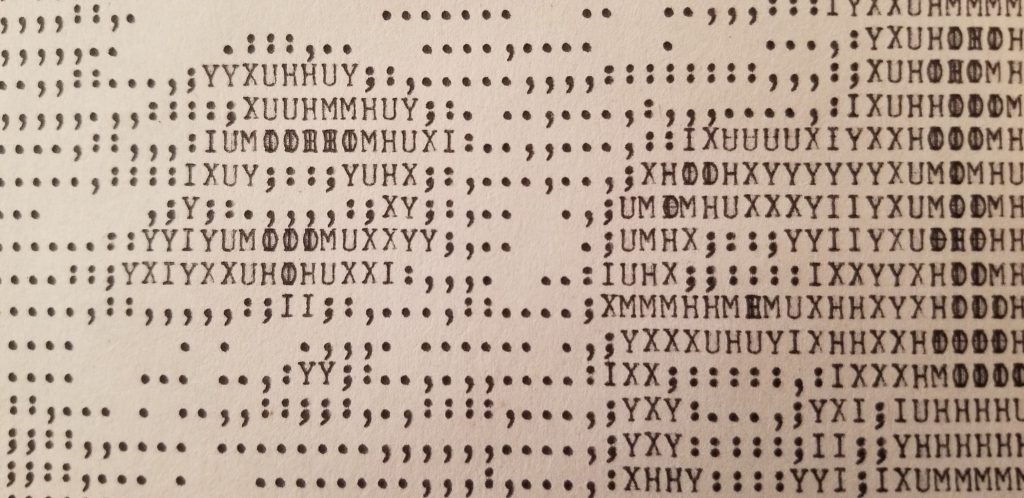An essay written to appease the general education requirements of the BS in IT Software degree at Western Governors University. Luckily for me, I enjoy writing, and especially about archaic technology. Needless to say, the essay passed the requirements with flying colors, and it’s likely that we have one new telegrapher joining the ranks.
Sometimes things that fall out of usefulness or style over the years are brought back into use for one reason or another (with the exclusion of everything from the 70s). Though certainly not mainstream, the electric telegraph has seen a mild resurgence in use even in the monstrous shadow of microprocessor technology—nay, even because of these weed-like growth in technology. The reasoning behind what would seem to be a backpedaling return to archaic apparatuses is actually not only for aesthetic purposes but also for very practical purposes as well: merely owning a telegraph contributes considerably to the artistic aura of one’s home or office, learning telegraphy and using a telegraph inflates the ego of those who are given to obscure hobbies, using a telegraph secures the communication of involved parties against the criminal eyes of both commercial and governmental agencies, and using a telegraph for communication over more modern methods even reduces the spread of infectious diseases.
In an age when high school students rarely know the meaning of “VHS”, one can hardly expect the average person to understand the basic concepts of telegraphy let alone know what the aged technology itself is. Still, commercial telegraphy had a surprisingly long-lived tenure and only was officially doused in the United States not too long after the demise of typewriters and not too long before the demise of the VHS tape. Like the VHS standard, telegraphy still has a commercial foothold internationally, though a small one.
As far as aesthetics go, the telegraph is a quality antique that adds a certain grace, dignity, and mystery to the artistic atmosphere of any collection. This appreciation is not reserved merely for steampunks and neo-Victorians but can rather be enjoyed by anyone with a true taste for genuine, noble art. Contrary to what most people view as art—something specifically set aside as a decorative piece—the telegraph rather blends in with its surroundings to contribute a more quiet, ambient aura of upstanding dignity to whatever wherein it is situated.
Most pre-1940s telegraphs are constructed of wood and brass, which are two of the world’s finest and most recognized artisan materials for quality apparatus construction and ambient art, especially when used together. They are not as overbearing and gaudy as gold or diamonds, and they are certainly not as sterile and dismal as silver or plastic; they’ve just the right spectrum of colors, hues, sheen, feel, and weight to reflect the dignified, intelligent, benevolent personality of the owner.
Excepting for more modern models used in the Second World War and by HAM radio enthusiasts ever after, the telegraph’s physical design is also very unique and pleasing to the eye: from the fulcrum of the key to the coils surrounding the sounder, the practicality of the simple machinery mixes with subtlety of the noble art to further the ambient art of dignity already exerted by the previously mentioned wood and brass. The telegraph could have originally been designed as a squarer, more sterile, more practical piece of machinery from its beginning. Indeed, later keys, sounders, and bugs reflected the more practical side of things, bugs and keys being made out of stainless steel and in a less personable fashion, sounders being done away with altogether and being replaced with sterile tone generators. The difference between these two major types of telegraph—the ambient artistic and the practical sterile—further contrasts and proves the pleasing qualities of the true telegraph.
One of the beauties of the telegraph is that, due to its simplicity and its usually rigid design, models from even the earliest telegraphic age in the mid-1800s still survive today in good condition. While many types of usable antique art such as the typewriter and the motorcar are prone to breaking down and wearing out, the simple design of the telegraph and the few moving parts make it a much hardier piece of machinery to last the ages. Because of this, the telegraph is also much more usable even after decades and decades of wear or attic-neglect, and thus the appreciator of art is inclined to put his sturdy investment to use.
Setting up one’s telegraph, learning American Morse code, and thereafter using said telegraph gives a person a greater thrill than most modern pastimes and adventures. While many today are settling for the mediocrity that is Twilight or an overabundance of video games, the user of the telegraph is keeping a somewhat ancient practice alive in his heart and his mind; connecting in such personal ways with the past gives the user the idea that he is a member of a very small and very privileged minority—and who could blame him? The fact of the matter is that his idea is right, and not necessarily because only very few privileged individuals are capable of enjoying the noble telegraph but rather because only very few privileged individuals choose to be.
Though all of the old telegraph lines of the golden era of telegraphy have long been replaced by international fiber-optic internet backbones, this doesn’t mean the user of the telegraph is limited to a small and insignificant wire network of a few telegraphs belonging to his estate or at most the estates of some several neighbors. Many would assert that it is due to the rise of the internet that the telegraph has seen its demise, and they would be correct at least to some extent. To the contrary, however, it is because of the rise of the internet that telegraphy has become a viable option of communication for more than just a personal estate network. Several centralized public telegraph networks exist, the chief among these being the MorseKOB project whose support for physical antique telegraphs connected via computer, always-available relay servers, and multi-platform client support make it an easy telegraph network for beginners with a virtual telegraph and the best telegraph network for professionals with a physical and antiquated telegraph. Due to the beforementioned rise of the internet and the free exploration of software and hardware development, the telegraph has become a viable means of ego-expanding, elite communication across the continents with a mysterious aura not unlike some aspects of 4chan, known for, among many much less noble things, mysterious events and puzzles such as Cicada 3301.
Not only can one communicate freely across the continents with the telegraph and an internet-based telegraph network like MorseKOB, but one can also communicate securely. Currently, while the best-known networks are public, there aren’t very many users attracted to the networks each day. Also, there are several thousand different lines or channels on each network; like a common CB radio, each line or channel can play host to as many telegraph users who tune in. One could easily send sensitive communication over one of the more obscure telegraph lines and feel fairly secure in knowing there will most likely not be anyone else who joins the line. This is, of course, more of a measure of security by obscurity or minority rather than true security.
One needn’t merely rely on the previously mentioned measure of security by obscurity by itself; that should normally be a final touch on the suite of security modern telegraphy offers. The user of the telegraph on a modern network is also afforded the ability to firstly use any rendering of Morse code he likes such as American, International, or even a completely new code he has devised himself. If he uses his own code, messages could be sent on public wires with many listening ears, and no one would know what was being said except for the intended recipient; even those attempting to intercept and decode the message would at most only be able to compare signals to one another and merely attempt—by way of word length and letter placement analysis—to figure out each letter. Additionally, after using the code of his choice, the telegrapher may also encrypt his message through one of many avenues from the less secure ROT13, the much more secure and obscure Enigma encryption, to the modern standards of PGP, to the traditional and unbreakable OTP. The telegrapher can even set up a daily code so that the encryption key used changes day to day according to a predefined calendar. Using one of these encryptions—especially PGP or Enigma—combined with utilizing one’s own devised Morse code would make decoding the message without the secret key and codebook literally impossible. If the user takes one more step and uses an anonymity proxy such as the Tor browser, he also renders his signals untraceable—not even the server administrator would be able to tell from where and from which computer his signals are being sent. Relaying messages in this manner would truly allow an individual or a group to send encrypted messages 24/7 without the messages being detectable and without revealing his identity, very similar to the mysterious number stations such as UVB-76, the Swedish Rhapsody Numbers Station, the Linconshire Poacher Numbers Station, and others.
When it comes to governmental mass surveillance, using a telegraph on a modern network is virtually undetectable by governmental agencies. In their constant ingestion of petabytes of internet communications, governmental agencies have glossed over the fact that true telegraph networks like MorseKOB don’t send data as text at all—encrypted or not—but they rather send data exactly the same way the old telegraph networks used to do: via binary “on or off” signals. While governmental agencies are ingesting data, attempting to decrypt common security standards, and searching for strings that insinuate illegal behavior, they completely gloss over the simple yet graceful “on or off” signals that the telegraph sends and receives. In this way, the telegrapher can be safely assured that even if his communications are in common International Morse code and are not encrypted, no governmental agencies will pick up a bit or a byte of what he is sending. Of course, if a government agent reads this or discovers there is still a part of the internet they don’t yet monitor, this may change, but for now it is safe to say that it is so far below government radar that they won’t see a blip of any message, secured or not.
Finally, one last grace of the telegraph is its commonly advanced capability to suppress the passage of infection and sickness. The common computer keyboard of today is one of the filthiest places on earth, especially when it’s a public machine used by dozens or hundreds of people every day. Bacteria and viruses can and do still live on the usually plastic surfaces of keyboards, mice, and desktops for hours or even days. However, studies have shown that copper and copper-based surfaces such as brass actually kill off microbes much more quickly. Thus the usage of the brass telegraph apparatus can actually help tide the spread of infection and sickness exponentially better than contemporary communication devices like computers and cellular phones .
All in all, the telegraph is a high-quality device to be coveted the world over. It brings a dignified, artistic aura to the owner and his or her premises, inflates the ego of that owner, is a secure method of sending and receiving sensitive communication, and even helps slow the spread of infectious microbes; It is a beautiful post-Victorian artifact, it is an enjoyable pre-apocalyptic piece, and it will be a useful post-apocalyptic device.



